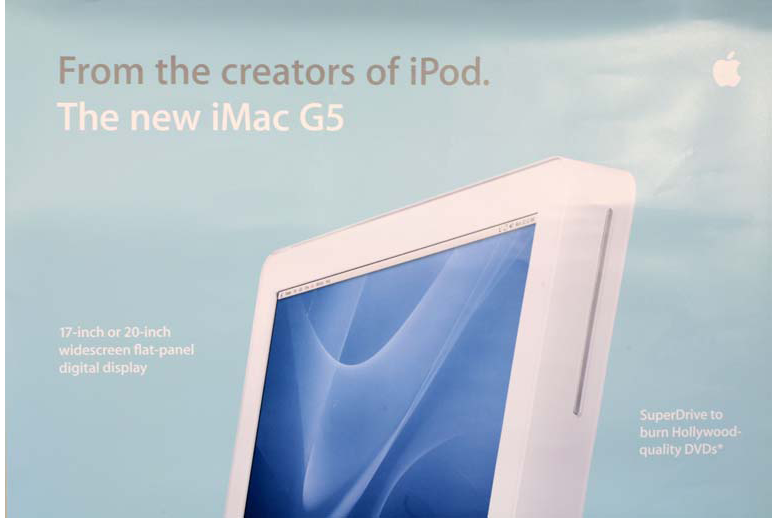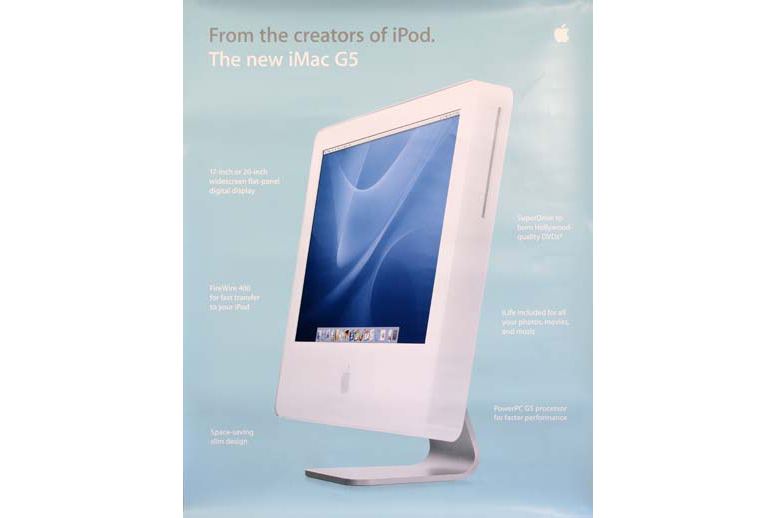|
iMac G5 Poster   Bill Buxton's NotesWhen the iMac G5 was released in August of 2004, I immediately noticed the tag line that Apple used in some of the marketing assets: From the creators of the iPod. It just leapt out at me – mainly because it spoke so loudly about the importance of adaptability and agility in successful innovation. Remember: Apple was a company that had been selling personal computers in volume since the launch of the Apple II in 1977. That is, they had a 27 year history of being identified as a computer company – in both name and perception. And yet, here was their latest computer not only adopting the design language of the iPod – in its colour, proportions and form – it was being promoted through its affinity to the upstart iPod, that only been on the market for 3 years, having been first introduced in October 2001. To my reading, the slogan wasn't just an opportunistic means to promote the iMac G5 by associating it with their most recent hit product. Rather, I see it - and saw it at the time - as something far more significant. It was notice that Apple was no longer a computer company. The change of the company name that was to follow, away from Apple Computer, was just a formality. The actual change occurred with the release of this product and the use of this slogan. But how was Apple able to do this without creating trauma to its brand? I think that the reason is that the core of Apple's brand was never actually "computer" in the first place. Rather, it was something closer to "design", "appeal", "current", "quality of experience", "lifestyle", "aspiration" … Words like that – or better. From that perspective, they didn't change their brand. They just changed labels. They knew the difference between the two, and to do that, they had to really understand their brand. In fact, one could argue, had they kept their old label, Apple Computer, then they would have damaged their brand. Jean Piaget defines intelligence in terms of an organism's ability to adapt to a change in the environment through the dual process of accommodation and assimilation. In this way, this change by Apple simply demonstrated intelligent behaviour. They recognized that things had changed, and it was time to shed some baggage – no matter how well it had served them over the previous 27 years. There are at least a couple lessons in this. One is, "Really know the essence of your brand". The other is, "If you – or your employees – are not intimately familiar with the core of your brand value, how will you ever know if any action is on (or off) brand?" All of which is a long-way of saying, I had to have this poster. It serves as a reminder of an important lesson, as well as an aid in telling the story. Like now. Bill Buxton Device Details
Company: Apple Inc. |
Year: 2004 |
